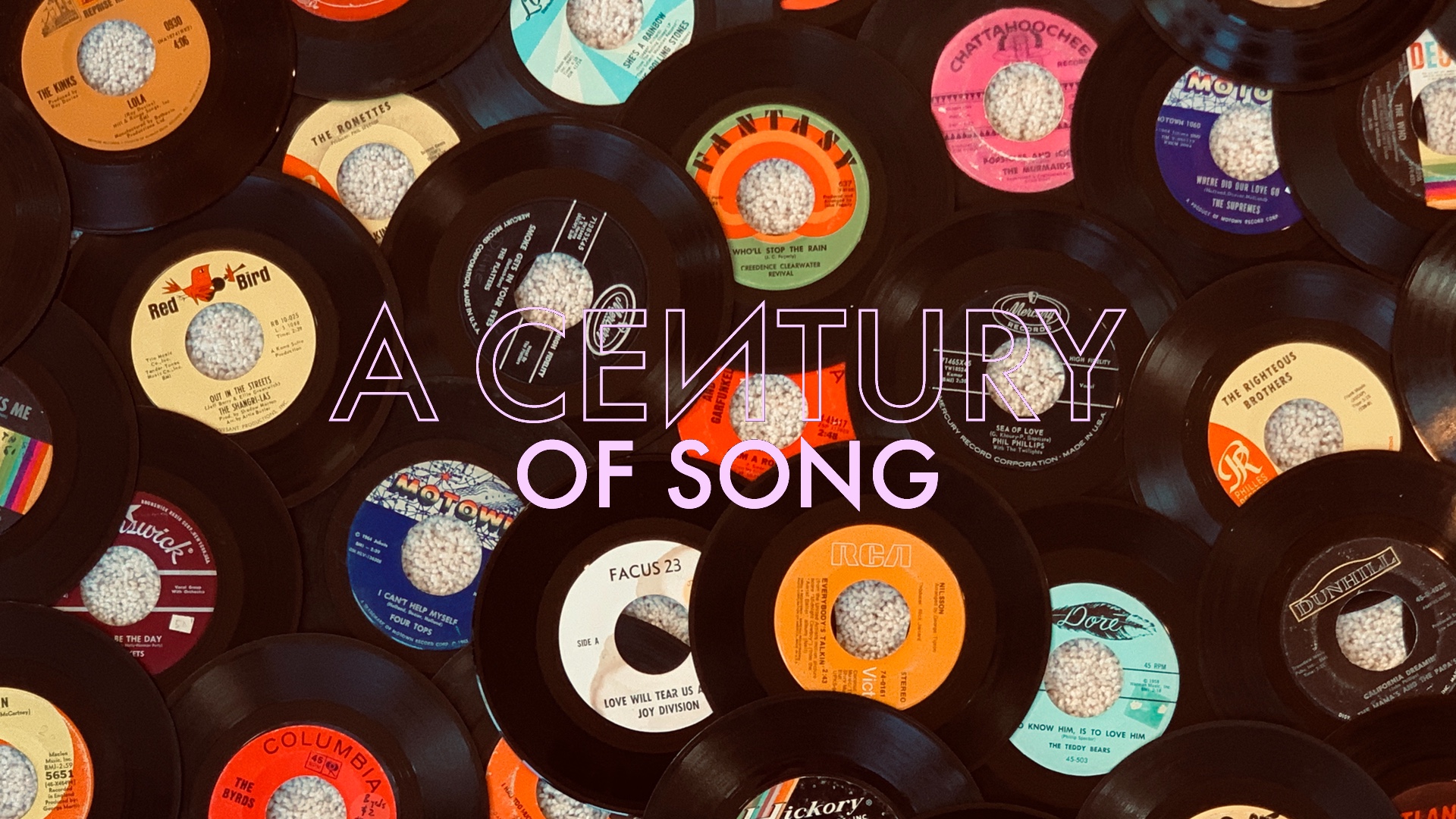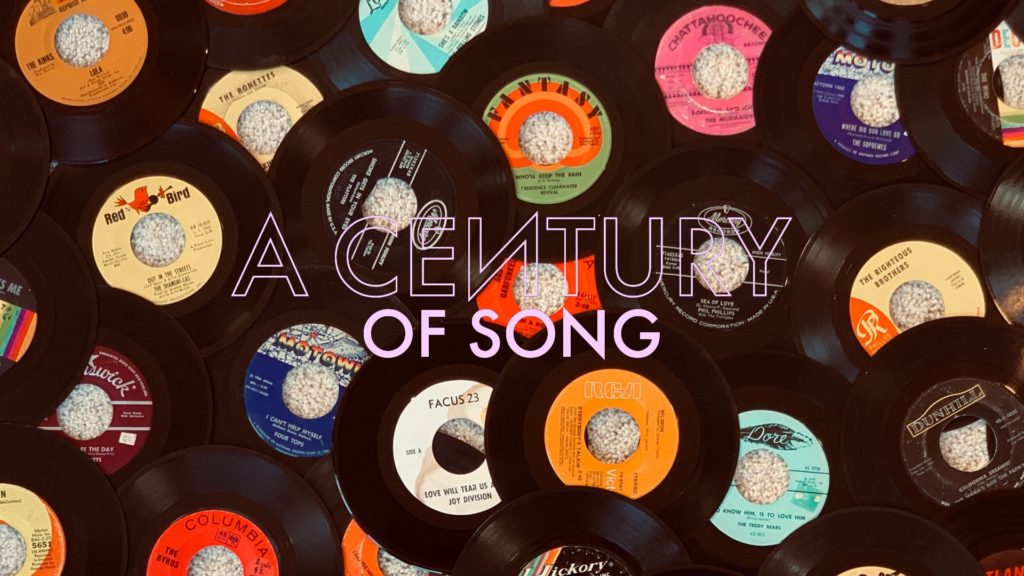
A Century of Song is an attempt to summarize 100 years of popular music through 1000 carefully chosen tracks. Included within this list are landmark singles, stellar album cuts, huge hits, hidden gems, and more than a few personal favorites. Read the introduction for the project here, and enjoy the embedded videos and Spotify playlist.
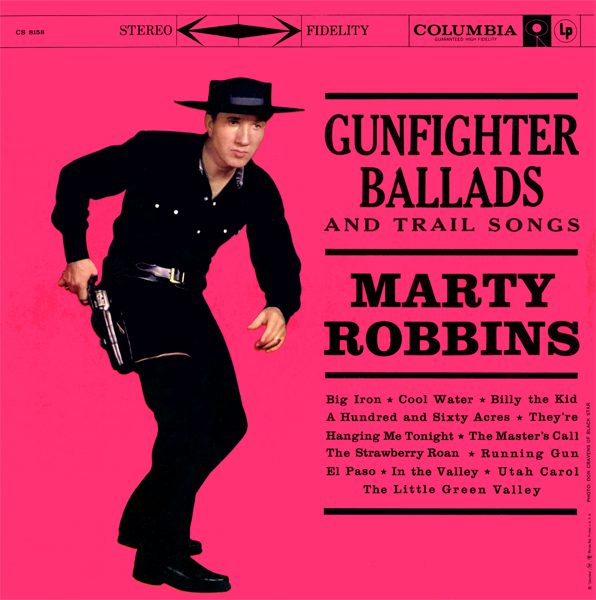
170
By 1959, the idea of the “singing cowboy” must have seemed a little quaint. After all, this was an era after the explosion of rock & roll and during the peak of the post-bop jazz scene. Even if the styling that Marty Robbins employed on Gunfighter Ballads and Trail Songs seemed passé to the hip listener, the album arguably represented the apex of the post-Hank/pre-Cash era of country music.
Part of what makes Gunfighter Ballads work so well is Robbins’ sincere affection for his material. Whether recasting traditional country songs or writing his own, Robbins imbues each track with a genuinely spirited vocal performance. When paired with Don Law’s rich production, it makes for a truly immersive listening experience.
As a testament to Robbins’ writing, the album’s two undisputed highlights were original compositions. While “El Paso” (#245) would become an iconic ballad in its own right, it’s the opening “Big Iron” that stands as Robbins’ finest moment on record. The track’s jaunty rhythm, charming melody, and fantastic vocals from Robbins and The Glaser Brothers bring the tale of an outlaw against the law to vivid life – until, of course, it ends in death.
Marty Robbins was a fascinating figure, one who lead a life that was equally tragic and triumphant. A complex man – and an honorary NAU Lumberjack – he was one of the towering figures of American country music, even if his success seemed somewhat anachronistic. “Big Iron” serves as a prime example of his talents.

169
While her first two albums – 1993’s Debut and 1995’s Post – found Björk carving out a fascinatingly unique sound, the Icelandic songwriter found a new peak on her masterful third album, Homogenic. Released as the record’s first single, the captivating “Jóga” stands as the high point of Björk’s catalog to date.
Cinematic in its sweeping grandeur, Homogenic had little precedent when it arrived in the fall of 1997. While the musical press on both sides of the Atlantic was presently obsessed with Radiohead’s then-recent masterwork OK Computer, Homogenic represented what was, perhaps, an even more bold glimpse into the future of pop music.
“Jóga” made for a stunning first impression. Its icy electronic textures evoked the popular perception of Björk’s homeland, but the song’s rich string arrangement brought all of the warmth of a geothermal pool. Björk continued to push her vocals toward newfound levels of expression, and her moving performance helped to fill in the emotional blanks of the song’s semi-cryptic lyrics.
At the peak of her career, both Björk’s talent and artistry were universally praised for their singularity. Two decades removed from that pinnacle – at a point that still finds her releasing outstanding work – she is rightfully hailed as one of the most forward-thinking visionaries in the history of popular music.
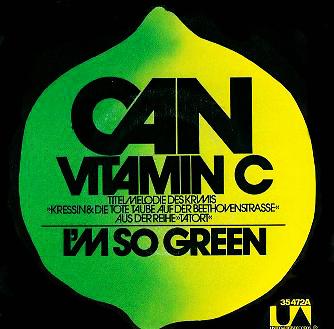
168
I defy you to find a more badass groove than that of “Vitamin C.” Really, if you find one, please let me know. While you’ll be able to track down something that is equally funky, and probably something that is just as sinister, you’re likely not going to turn up anything that possesses both descriptors in such abundance. Though they were extraordinarily influential to a host of genres that followed, there is still little that sounds quite like Can at their peak.
As the centerpiece to the band’s 1972 record, Ege bamyası, “Vitamin C” balances Can’s juxtaposition of experimentation and accessibility into a thoroughly intriguing mix. There were perhaps (slightly) poppier moments within the group’s trilogy of early-seventies masterpieces, but none that so effectively incorporated their exploratory approach to writing, performance, and recording.
The common denominator that separated said trilogy from Can’s earlier and later work was the presence of vocalist Damo Suzuki. Suzuki’s lyrics are every bit as perplexing as one might expect from a Japanese-born improvisational singer, in an experimental German band, working primarily in the English language. As is the case elsewhere in Can’s catalog, Suzuki is a compelling focal point throughout “Vitamin C,” throwing his voice to newly tuneful heights in the song’s cryptic chorus.
Of course, the element that allowed Suzuki, Michael Caroli (guitar), Holger Czukay (bass), and Irmin Schmidt (keyboards) the latitude to run freely was the incomparable Jaki Liebezeit. While his drum work was every bit as exploratory, Liebezeit had an uncanny knack for holding Can’s highly combustible sound intact just enough to appeal to mildly-adventurous listeners. This is one of his finest performances, and Can’s greatest song.
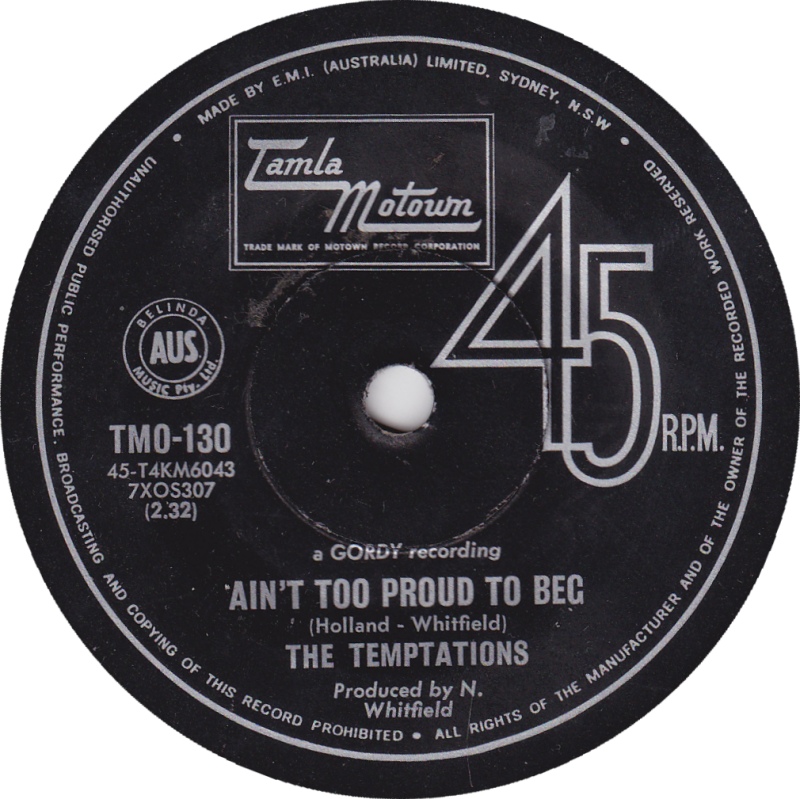
167
In what feels like a post from ages ago (February 2020, actually), I wrote about how my repeated childhood viewing of the Meet the Raisins! television special served as my first sustained exposure to some of Motown’s greatest songs. One of the highlights from that program was a take on this 1966 single from The Temptations – still my favorite track in their catalog.
Lead vocalist David Ruffin is the undisputed star of “Ain’t Too Proud to Beg” – a massive hit in the wake of the undeservingly-poor chart showing of The Temptations’ previous single, “Get Ready” (#222). Ruffin’s pleading performance is befitting of the track’s lyrics, which find him begging for a lover to stay.
Though the song finds its narrator in a precarious position, the backing vocals of The Temptations and the track’s energetic rhythm make for a spirited affair. Whereas “Get Ready” had possessed all of the stomping power of contemporary rock music, “Ain’t Too Proud to Beg” found a comfortable middle ground that made it perfectly situated for radio.
The commercial reward of another big hit kept The Temptations’ next several singles in a similarly safe mode. The group would hit another peak later, with their embrace of both psychedelia and funk, but never again would they quite match the irresistible charms of “Ain’t Too Proud to Beg.”
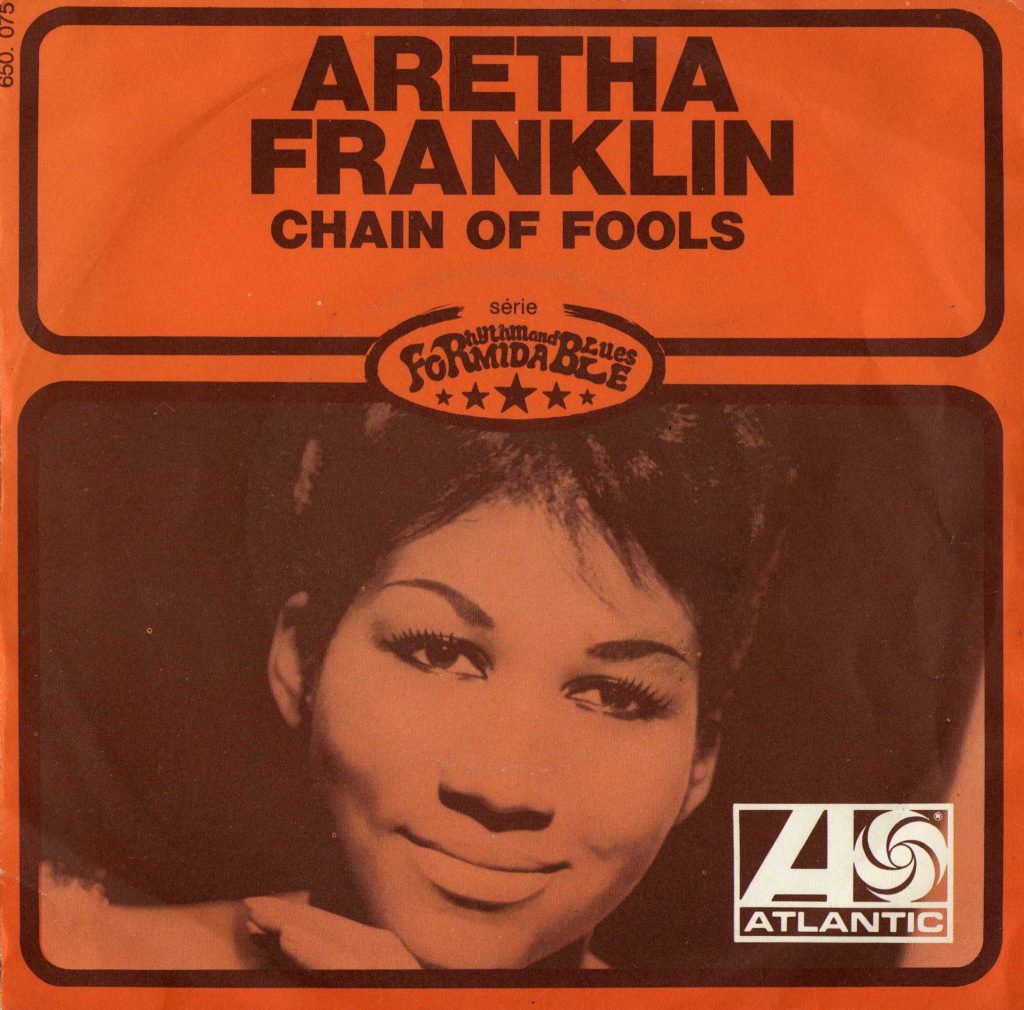
166
As if crawling out from the swamps of Muscle Shoals, Alabama, Joe South’s tremolo guitar introduction sets an intriguing and ominous scene. This is gonna be some kind of devilish blues, right? Then, that voice – the voice – enters. This ain’t the blues. It’s a triumph.
Aretha Franklin was already a star by the time she recorded “Chain of Fools.” “Respect” had topped the charts a few months prior, and Franklin now had artistic latitude and leverage that few Black female artists of her time would ever achieve. Despite her career success, Franklin’s personal life was in disarray. Soon to be separated from an abusive husband, she found – in a composition by Don Covay – a song that would serve as her personal statement of liberation.
“Chain of Fools” is a mighty performance from all involved. To call its rhythm “propulsive” is to do the song a serious disservice. In addition to South’s guitar, the clanging ride cymbal and cracking snare drum of Roger Hawkins practically jump from the speakers. While Aretha is nothing short of commanding throughout, the backing “chain, chain, chain” chant of The Sweet Inspirations proves to be a worthy complement.
There is, of course, one single in Franklin’s catalog that surpasses “Chain of Fools” in its importance, and at least rivals it in immediacy. However, “Chain of Fools” is an urgently compelling recording from one of the greatest vocalists of all-time.
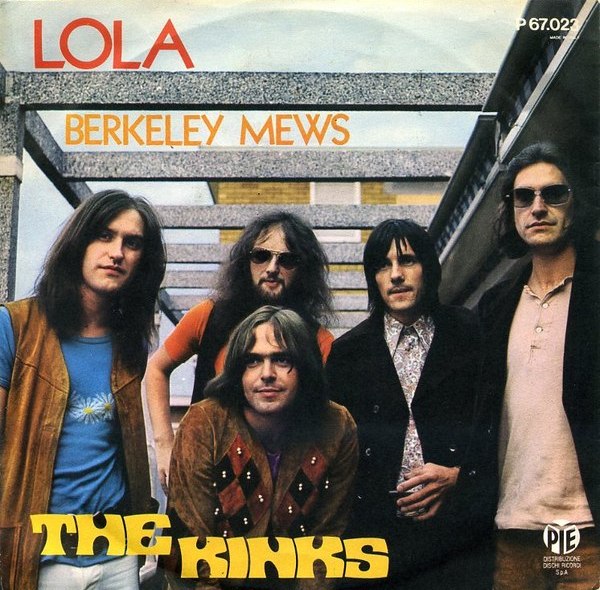
165
John Lennon was blessed with remarkable talent and charisma, and a gift of turning complex emotion into universally graspable turns of phrase. Paul McCartney was probably crafting gorgeous melodies from the moment of his first cries. However, it’s entirely possible that the closest thing to a genius in the British Invasion was Ray Davies. And Davies was way too smart to not know exactly what he was doing when he wrote “Lola.”
Musically, “Lola” found The Kinks leaning into the Americana influences that had occasionally popped up in their earlier work. The track had a rustic quality that paired naturally with their rock impulses, and featured one of Ray Davies’ most engaging melodies. Most notably, the song’s bridge is a minor masterpiece of its own. Had it been nothing but babble lyrically, “Lola” still might have made the top ten in the singles charts.
Where “Lola” truly became a monumental track was in its subject matter. Breaking all manner of taboos, the song was arguably the first charting hit on either side of the Atlantic to openly address gender fluidity and/or trans identity. For a group that contained at least one bisexual member, it was a knowing nod to a culture that The Kinks had more than a passing familiarity with. In fact, there is ample speculation that the group had already addressed similar themes – albeit in a more coded manner – in earlier tracks such as “See My Friends.”
While Davies was famous for his wry sense of humor, it’s not hard to hear “Lola” as a wholly sincere track; at least that’s how many have interpreted the song, viewing it as life-affirming, rather than subversive. Consider, for instance, what may be its most important lines:
Girls will be boys, and boys will be girls
It’s a mixed up, muddled up, shook up world
Except for Lola
Lo lo lo lo Lola
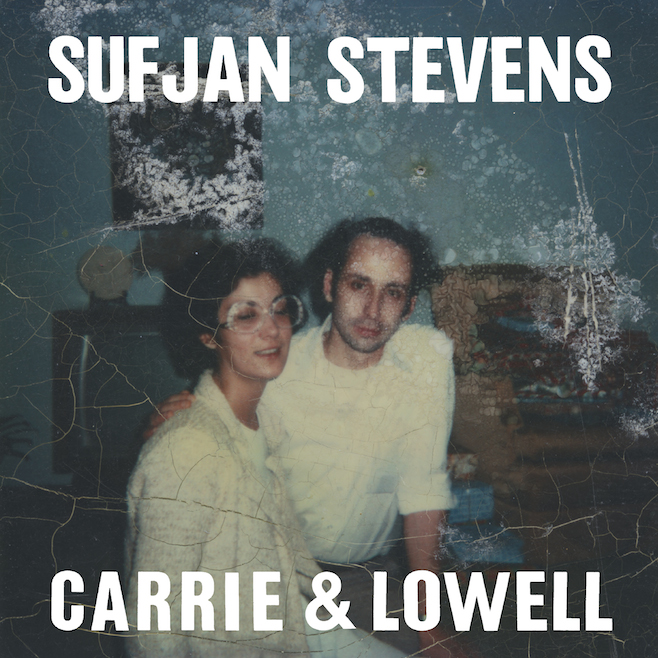
164
In the wake of the breakout success of 2005’s Illinois, Sufjan Stevens detractors were quick to criticize his work as overly precious, bookish, or even use the dreaded descriptor, “twee.” That record’s proper follow-up, 2010s The Age of Adz, retained his penchant for ornate arrangements, but rather than mining social geography to craft semi-autobiographical narratives, Adz was a claustrophobic ride through Stevens’ post-Illinois physical and mental breakdown. Not long after the release of Adz, Stevens’ long-estranged mother passed away from cancer. It was her death that hovered over Stevens’ next record: 2015’s Carrie & Lowell.
In a sharp contrast from Adz, Carrie & Lowell featured stark production, frequently finding Stevens’ vocals unadorned by anything beyond a single instrument. Often unbearably intimate, the album was not for the faint of heart, as it saw Stevens unearthing long-dormant memories of a relationship that had left him with severe emotional scars. Nowhere was Carrie & Lowell more heartbreaking than on its harrowing centerpiece, “Fourth of July.”
Much of Carrie & Lowell saw Stevens working to find forgiveness for the mother that had abandoned him as a young child. “Fourth of July” is an idealized version of his final conversation with her, beginning from the perspective of the aggrieved son:
The evil it spread like a fever ahead
It was night when you died, my firefly
What could I have said to raise you from the dead?
Oh could I be the sky on the Fourth of July?
As the song progresses, Stevens alternates to his mother’s perspective. The lines that he attributes to her are nothing short of devastating, especially when knowing that either a) they were never actually said, -or- b) they were said, and meant:
Did you get enough love, my little dove
Why do you cry?
And I’m sorry I left, but it was for the best
Though it never felt right
My little Versailles
The grief and anguish expressed in “Fourth of July” give the song an almost-voyeuristic quality, and while it was the most artless work in his discography to date, it somehow, simultaneously, stands as his single greatest work of art.
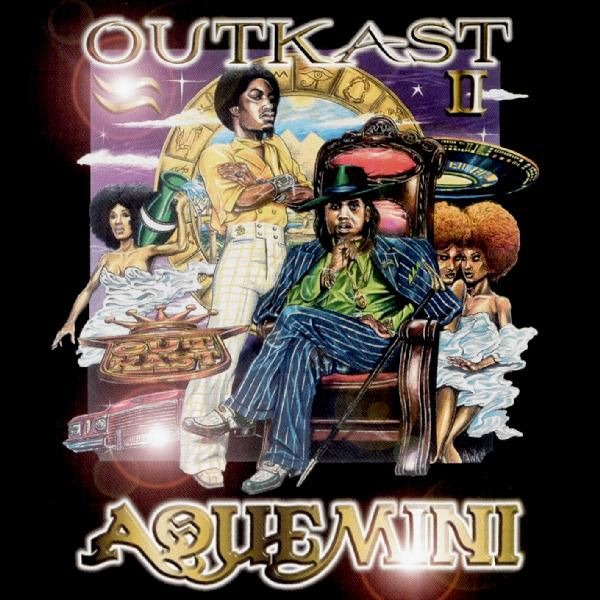
163
From an instrumental standpoint, this highlight of OutKast’s 1998 album, Aquemini, may be my favorite hip-hop song of all-time. Fortunately, “Da Art of Storytellin’ (Part 1)” is just as masterful lyrically. When paired with its companion track, it makes for an engrossing centerpiece to a remarkable record.
Over the course of a wildly successful decade, OutKast thrived on the talent, chemistry, and charisma of its two emcees: André 3000 and Big Boi. Alongside their collaborators in the Dungeon Family, the Atlanta duo redefined the rules of hip-hop, and almost singlehandedly made the South a talking point in the rap press. The variety of sounds and styles on the sprawling Aquemini is still staggering over twenty years later, but nowhere is it more appealing than on the breezy “Storytellin’.”
While the track’s musical backing packs in all the warmth of a southern summer night, “Storytellin’” is complex lyrically. Perhaps no single track in OutKast’s catalog better displays the unique personalities of its creative partners, while also showcasing their complementary nature. It’s André’s verse that is particularly poignant, bringing a tragic edge to the song.
On Aquemini, that edge provides a fitting segue into the apocalyptic feel of the also fantastic “Da Art of Storytellin’ (Part 2).” The single/video version has an extra verse by Slick Rick tacked on at the end. While I’m not sure that I love Rick’s verse, I am certain that I love seeing these two guys being “these two guys” together – rather than just on an album cover – so that’s the video that I chose.
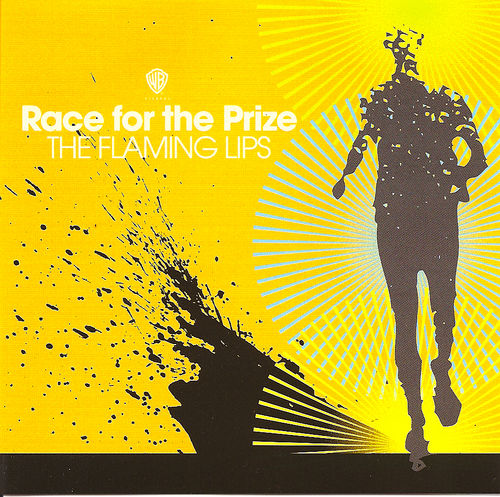
162
Anyone who has been lucky enough to see them in concert at any point over the last few years knows just how much of a spectacle The Flaming Lips’ live shows have become. While the Lips have had a flair for the theatric from the outset of their career, the group’s later years have found them embracing a form of sensory overload, and the opening track to their masterpiece is what typically sets the stage.
To call 1999’s The Soft Bulletin “unexpected” is an understatement. In the popular consciousness, The Flaming Lips were almost exclusively known for their oddball 1993 hit, “She Don’t Use Jelly.” While the Oklahoma group had built up a dedicated following, not even their most fervent supporters could have expected the former noise rock band to channel Pet Sounds on a lushly orchestrated song cycle.
The Soft Bulletin counters its rich soundscape with a wildly-swinging emotional range – one that finds tragedy in triumph, and vice versa. That tone is first established in the cavernous drums, pitched Mellotron, and shaky voice of “Race for the Prize.” Multi-instrumentalist Steven Drozd was the architect of the vibrant musical backdrop, and “head Lip” Wayne Coyne brings a powerful sense of gravity, with his story of two scientists racing to discover the cure for a deadly sickness. Coyne had recently lost his father to cancer, and it’s not hard to hear an elemental pain in his performance.
Already deeply affecting on record, “Race for the Prize” becomes cathartic in a live setting. For all of The Flaming Lips’ showiness, it’s hard for those familiar with the band, their story, and their music to see their life-affirming message as anything less than completely sincere. To experience that kind of genuine positivity in person is truly something. I can’t wait until I’m able to do it again.
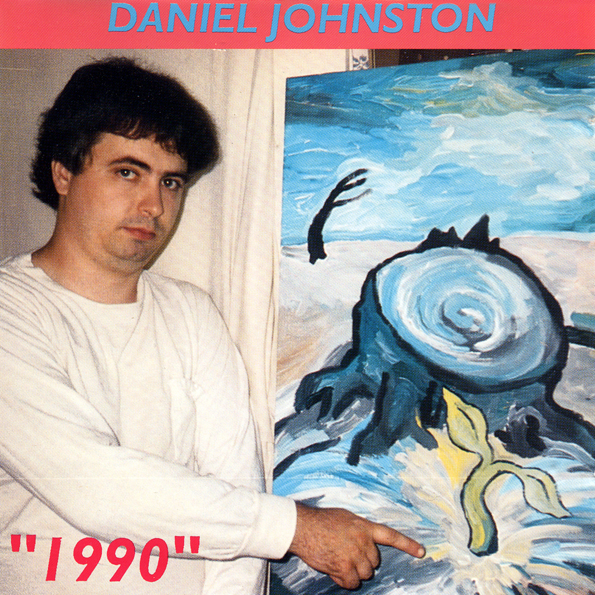
161
Seeing Daniel Johnston live was an entirely different experience. In 2017, the singer-songwriter announced a tour in which he would be backed by a rotating cast of musicians, depending on the city. My wife and I were able to see him in Portland, joined by Built to Spill, on the third to last show of the tour.
Johnston had only toured sporadically in the previous several years, and rarely in the United States. Understandably, he had always been an unpredictable performer, but the Johnston that we saw that evening was a far cry from the one seen in the more confident footage from the acclaimed documentary, The Devil and Daniel Johnston, which was screened before the show. For their part, Built to Spill seemed a bit flummoxed, often finding it difficult to keep in time with the fluctuating singer.
The concert was at its best when it didn’t try too hard to incorporate Johnston into an instinctively loud rock band. Its peak came with the last song – a track that Johnston had first recorded somewhat haphazardly for 1984’s Retired Boxer, and returned to in a more polished and affecting manner on his album 1990. As “True Love Will Find You in the End” finished, the house lights came on, and the audience gave a respectful ovation to one of the most unique artistic talents of his time. More than a few members of the crowd had been visibly moved to tears.
Three nights later, Johnston closed out his Seattle show – the final stop of the tour – with “True Love Will Find You in the End.” He would never take the stage again, dying of a heart attack less than two years later. Johnston never found the exact kind of love that he sang of on this track, but, in the end, a different kind of affection found its way to him. I’m thankful that I got a chance to express it in person.

